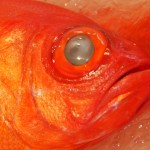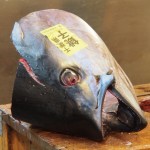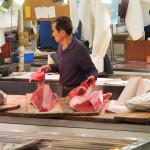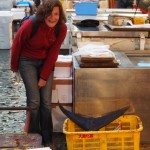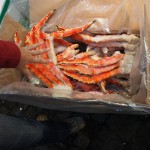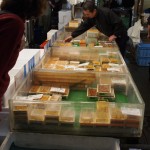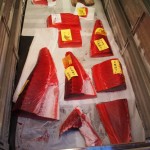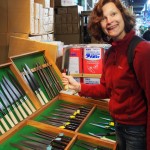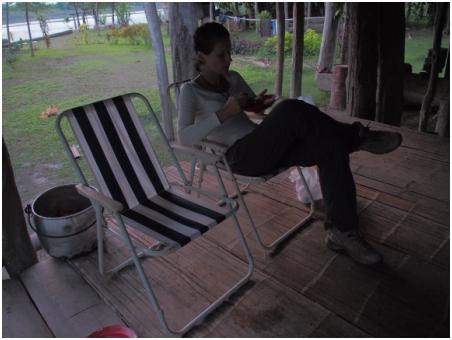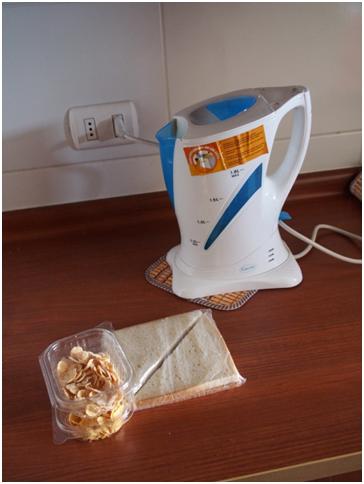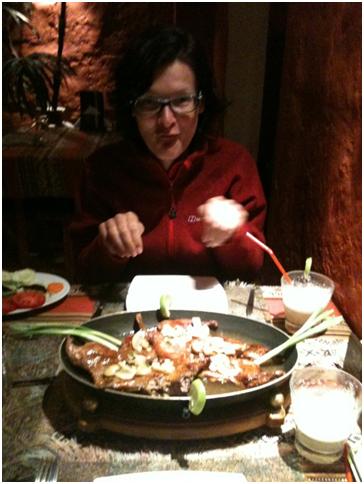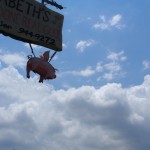Fish fish fish, fishy fishy fish!
FISH!
Tokyo baby, yeah!Yup, it’s early morning and we are at Tsukiji fish market in Tokyo. A huge warren of stalls piled high with every conceivable kind of seafood, and a few others besides. Squat men in wellington boots stride around with single-bladed sashimi knives as tall as they are, committing astonishing acts of butchery on the vast swarms of equally vast tuna fish that flood through here every day. Cabinets full of wildly expensive sea urchin roe, banks and banks of humming aquariums, crab claws, crab sticks, live crabs by the dozen dozen. Red fish, silver fish, black fish, grey fish, white fish and their eggs besides. Whelks, clams, oysters, octopuses (-pi?) and squid of every size and colour. Seaweed, dried and fresh. If it comes out of the sea, it’s here. And it’s probably still alive.
And we’re hungry.
It’s our last morning in Japan. The coffee man (er, that’s me) went out to Starbucks for a seasonal gingerbread latte first thing, but otherwise we are empty (by the way, apparently having the whipped cream topping “on the side” is Against The Rules in Japan. But I needed to separate it from the hot coffee to stop it melting away before I could carry it up 24 floors to a snoozing Lucy. So I had to resort to sleight of hand, trickery (and, er, cup thievery) – result! Anyway, I digress.) We are looking for our favorite sushi restaurant, possibly in the world. And we found it. Of course we couldn’t remember the name, but we remembered the eel grilling station (complete with mini portable flamethrowers) from our last trip, and we found our seats with serious anticipation.
Breakfast. As much sushi as you can possibly eat (and we were trying very, very hard). Include multiple rounds of the most expensive top quality sea eel and the extraordinary fatty tuna. Also Uni (sea urchin) which is so expensive and hard to get right that we had previously thought we were only going to bother with it when we were physically in Hokkaido where the best stuff comes from. All this, plus the usual soups and salads and two big beers. We rolled out of there stuffed to the gills and walking on air. My god it was SO good.
And the damage? £30 a head.
- Fish! A slightly grumpy looking red snapper-type fish
- And a slightly grumpier looking tuna fish
- Which is hardly surprising when you consider what has been happening to the rest of him
- I mean, you’re swimming along minding your own business, and suddenly your tail ends up in a yellow bucket!
- Extraordinarily huge crab legs (Lucy’s hand is for scale – she isn’t going for the stealth sashimi grabbing manoeuvre)
- Sea urchin roe – this normally comes in very very small, very very expensive portions, not in humungous cabinets
- The temptation to buy one of these huge lumps of tuna, a bottle of soy sauce and a couple of napkins was pretty hard to resist
- We bought some amazing kitchen knives in Tokyo, so Lucy had plenty of practice waving steel around and looking slightly bonkers
- I, on the other hand, was busy introducing myself to a tank full of puffer fish, and not looking bonkers at all
Incidentally, the three tier sushi restaurant test I mentioned a while ago? Try the standard tuna (which is safe and not too expensive) and if it’s really good have the mackerel (which is harder to get right, is horrible when poor quality but when done well is extremely good) and if this is really good try the uni (which is expensive, almost impossible to find done well and frequently disgusting, but a real delicacy when good). So there you are. Happy eating!

